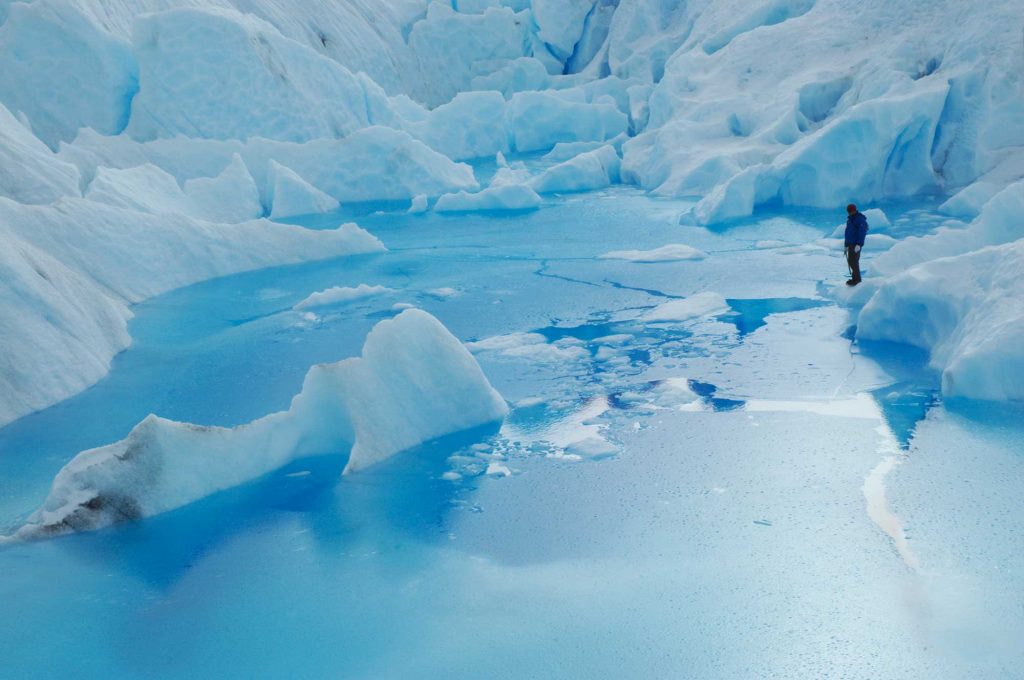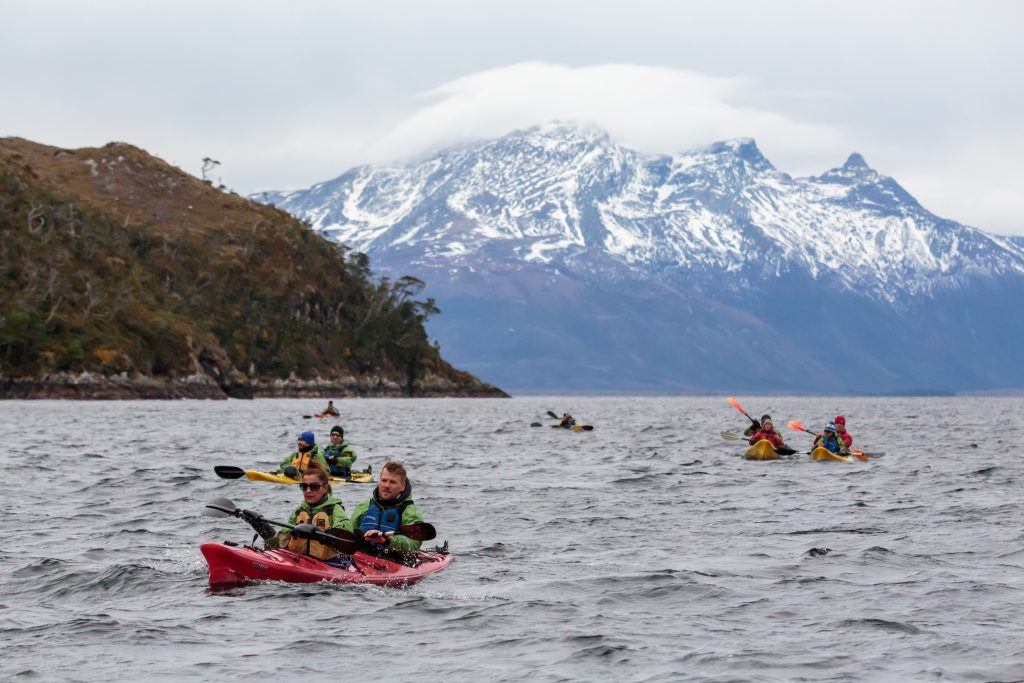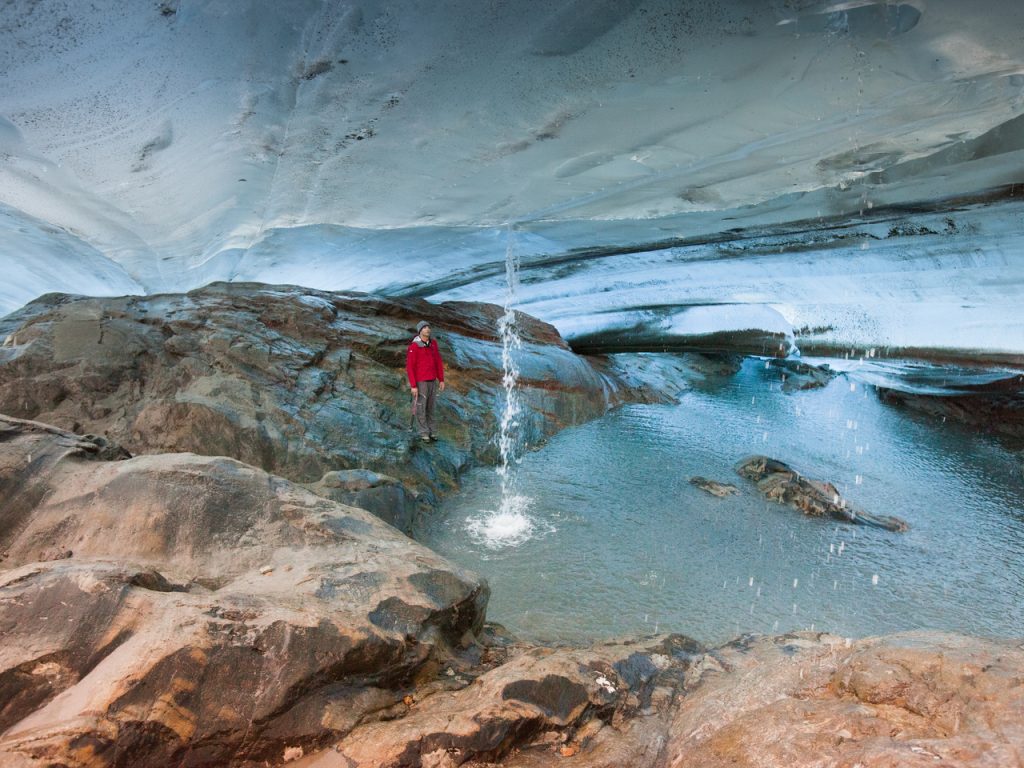Kayaking near the glacier is a thing of the past at Patagonia’s Viedma Glacier. Due to climate change, it’s just too dangerous to approach the glacier now. Massive chunks of ice could break off at any time, slamming into vessels and causing enormous waves to capsize them.
“There had been so much ice breaking from the wall that even the navigation in front of the glacier, you couldn’t even get close to it just because there were chunks of ice floating everywhere,” said Fernando Diez, marketing manager at Quasar Expeditions, which leads adventure tours throughout Patagonia and other locations.

According to Diez, kayaking isn’t the only Viedma Glacier activity impacted by climate change. His company was contracting with local operators to take clients on glacier treks in recent years, but the access route broke off during a major calving event, leaving a sheer wall in its place and making access to the trekking area increasingly difficult. “During the last several years, the recession of the glacier has been so big that the activities started to mutate,” Diez said. He noted ice hiking was classified as “easy-to-moderate” through 2015, but as more ice receded, the route became more challenging, increasing to a “moderate-to-difficult” rating during the 2016 season as the access point changed.
It eventually became appropriate only for skilled technical ice climbers, so the company discontinued the offering in 2017. Instead, Quasar Expeditions now takes clients on hikes with trailheads about 15 minutes away from the glacier, including the hike to the base of Fitz Roy, a well-known mountain in Patagonia. It added other glacier hikes in the region as well, such as those on Cagliero Glacier, which is far more challenging and also a 3.5-hour round-trip drive away.
Calving and crumbling glaciers are just one climate change-related hazard facing adventure tour operators. From ice-related hazards to massive wildfires, outfitting companies and guides are seeing the impacts of climate change in their day-to-day operations, forcing them to reevaluate some of their trips and take extra precautions to ensure client safety.
Antarctica Faces Melting Ice, Changing Wildlife Populations
Climate change is perhaps most evident in polar regions, where rapidly melting ice and rising temperatures make conditions increasingly unpredictable for tour operators. Antarctica is one of the locations where Chad Carey’s company, Chimu Adventures, takes clients, and the continent is significantly affected by climate change. Calving glaciers are one hazard the company faces.
“As the glaciers move faster and large icebergs eventually break off or shear, they can create rather large waves,” he said, noting waves don’t typically impact ships, but can flip a Zodiac boat. His team has extensive safety protocols in place to prevent that from happening and keep everyone safe. They stay a good distance from icebergs, maneuver slowly and cautiously around “bergy bits” in the water, and ensure all ice is stable before venturing near the ice.

Carey noted different regions of Antarctica are seeing different impacts from climate change, but many of these impacts relate to melting water and ice as well as changing ecosystems. Melting ice is making it more difficult to access wildlife-viewing areas since some routes to penguin colonies can be covered in meltwater. “The amount of ice that is melting is creating these torrents of water that come down the streams, and it actually makes it quite difficult to cross sometimes,” Carey said. The changes also impact wildlife as the marine ecosystem learns to adapt to the challenging and quickly evolving environment. Carey said one animal, the chinstrap penguin, used to be a common sight, but now the animals are seen only rarely, which he attributes to changes in the environment.
In order to keep everyone safe and adapt to changing conditions, Carey’s company keeps a very high ratio of experienced expedition staff to guests so they can keep a watchful eye on everyone, in addition to following many other safety protocols.
Wildfires, Heavy Rain Also Prove Hazardous
Calving glaciers and melting ice aren’t the only hazards outfitters are facing due to climate change. Mike Harris started his canyon guiding company, Canyons Japan, 20 years ago, and before that he was a raft guide in Japan and other countries. Wild and rapidly changing weather is one of the biggest climate change-related hazards he faces as he guides clients through the canyons.
“One of the most dangerous developments has been the increase of phenomenon known as ‘guerrilla storms’ by media in Japan — sudden storms that can form in less than 20 minutes and deliver over 100 millimeters of rain in an hour,” Harris said.
Such rapid accumulations of rain can be dangerous and cause flash flooding, which can be deadly in a canyon. “Adverse weather has historically led to some of the biggest accidents in canyoning,” he said, noting the Interlaken canyoning disaster that killed 21 people in 1999. “I have witnessed the weather patterns in Japan drastically change in the short 25 years I have lived here. In the past, seasonal changes were almost predictable to the week.” Harris said the weather is becoming increasingly erratic, with early summer snow, mid-summer cold snaps, and intense typhoon seasons.
In order to keep clients safe, his company has a person constantly monitoring the weather radar on days when storms could form. The weather monitor is in constant communication with tour leaders about any weather changes or potentially hazardous conditions.

Such communication is also key for Kate Wannan, adventure program coordinator for Wild Women Expeditions, a company leading adventure-based trips all over the world.
One of the company’s August 2018 kayaking trips in Canada was affected by raging wildfires, which are fueled by climate change. One group’s kayaking route was near a wildfire, so the company’s staff and local outfitter decided to reroute the trip and paddle another route many kilometers away. The company communicated with clients for weeks before the trip and everyone agreed to go on the rerouted trip. Wannan stressed the importance of communication with operators and clients alike to be prepared for any situation that may arise.
“We’re always getting updates from all of our operators in case there is a natural disaster or something that’s affecting our trips,” Wannan says.
Travel As An Opportunity To Talk About Climate Change
Carey believes it’s important for his clients to come to Antarctica and see first-hand how climate change is affecting the continent. He thinks it’s particularly impactful when people come back more than once and see the rapid changes over relatively short periods of time.
“One of the reasons I feel it’s important to get people down to Antarctica is because … I don’t think most of us in our day-to-day lives really notice the impacts of climate change that much where the main population centers are. But if you go down to Antarctica, you can really tell — you can see the things that are happening — and it’s quite disturbing,” he said. “It’s not just big things like the ice, which is pretty easy to identify. It’s changing ecosystems and things like that.”
He hopes people will become advocates for Antarctica as a result of the trips and share what they find with others. “If no one goes down there, then nobody knows what’s happening,” he said.
